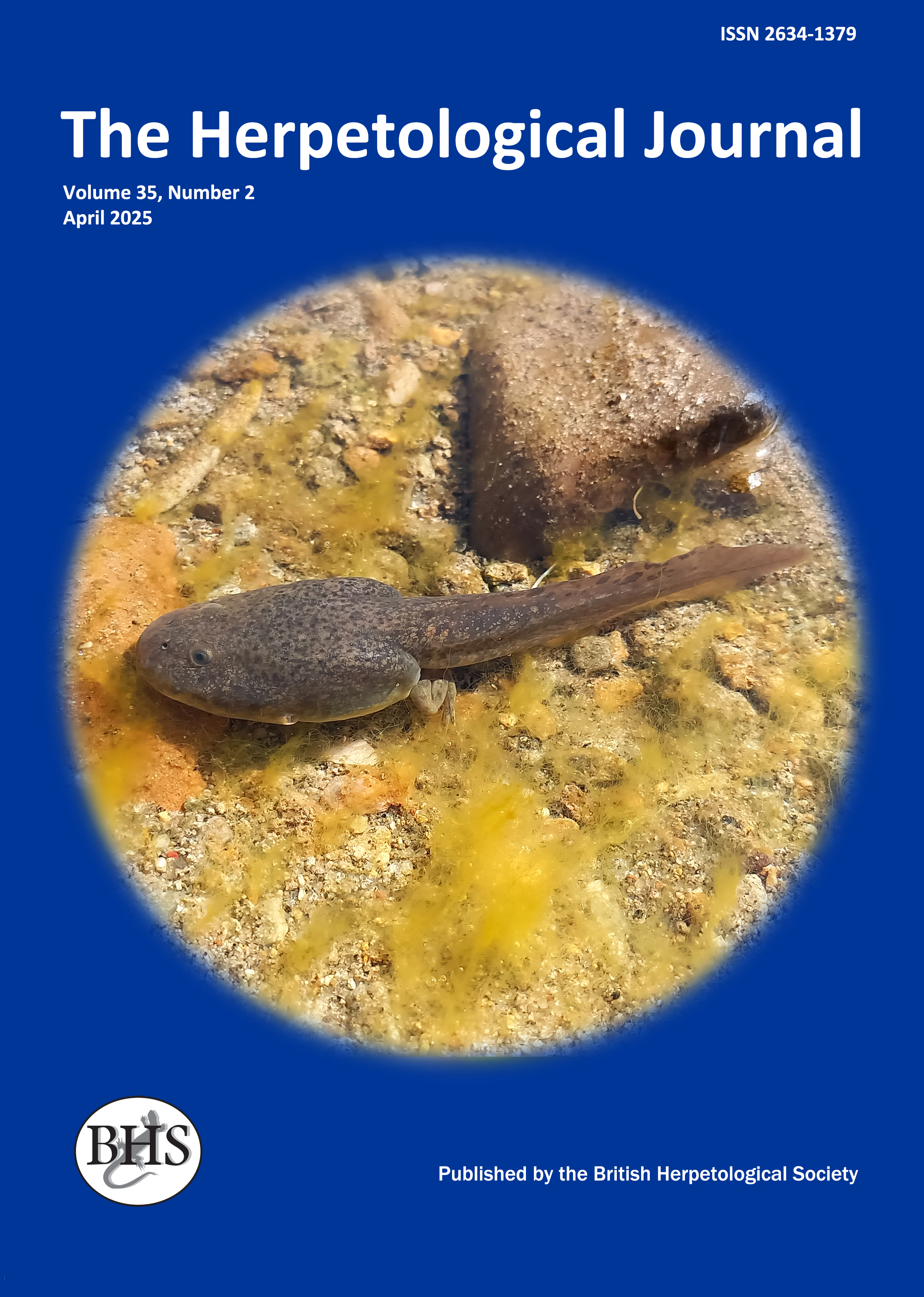
The Herpetological Journal
The Herpetological Journal is the Society's prestigious quarterly scientific journal. Articles are listed in Biological Abstracts, Current Awareness in Biological Sciences,Current Contents, Science Citation Index, and Zoological Record.
ISSN 0268-0130
2021 Impact Factor from Clarivate for the Herpetological Journal is 1.194, an increase of 0.332 from 2020.
pdf 03. Ecological constraints on feeding and growth of Scaphiopus couchii
1164 downloads
Open Access
pp.257-265
Authors: Karen Tocque, Richard Tinsley & Tricia Lamb
Abstract: The ecology of the desert toad, Scaphiopus couchii, is very precisely regulated by summer rainfall, such that emergence may be less than 20 nights/year. There are estimates in the literature that, at best, S. couchii can obtain its entire annual energy requirement from a single, very large meal, comprising of 50% its body weight in lipid-rich termites. However, our field data from the San Simon Valley in southeast Arizona, show that the toads are generalist feeders, taking prey groups which appear in sequence during the short summer season, including a remarkable range of noxious animals (solpugids, scorpions, centipedes and pogonomyrmid ants). Alate termites emerged briefly after the first rains and seldom represented a major component of the diet. On the other hand, beetles and other hard-bodied insects formed a consistent food type throughout the season. Alate termites represented around 24% of the total food items ingested by S. couchii and when prey size (length) was taken into account their contribution to the annual intake was around 20%. Beetles, on the other hand, contributed (by size) around 33% to intake, with ants representing around 1 9% and all other items each representing less than 8%. Differences in prey type, total food ingested and temperature all significantly influenced the weight change of individual toads fed under controlled laboratory conditions. Animals which were fed more frequently grew more rapidly, since weight increases were correlated with food intake. However, for any given intake, increases in weight were significantly lower at high environmental temperatures (3 1 -33°C compared with 20-24°C), presumably due to increasing metabolic demands with temperature. The nutritional quality of the food significantly influenced body weight change and fat body accumulation: toads amassed excessively large fat bodies (representing up to 1 4% body weight) when fed with lipid-rich mealworms, compared with those fed crickets (fat bodies up to 1 0% body weight), and toads fed woodlice had virtually no fat bodies after eating an equivalent number of meals. These studies show that the natural prey range of S. couchii varies in time and space, and when toads consume high energy foods, weight increase and fat deposition are very efficient. However, the frequent ingestion of other foodstuffs, lower in calorific value, suggests that a greater number of meals are necessary to accumulate the total annual energy requirement. These other prey items may provide essential nutrients that are lacking from lipid-rich foods.

